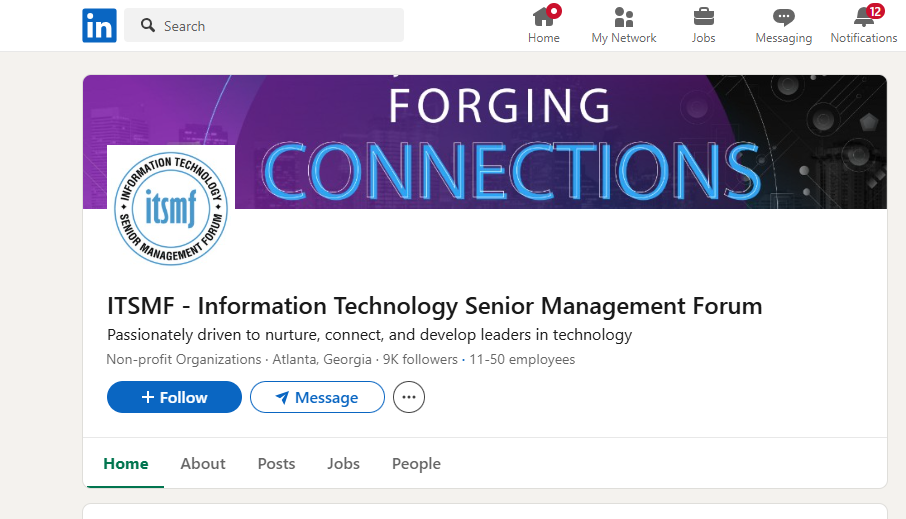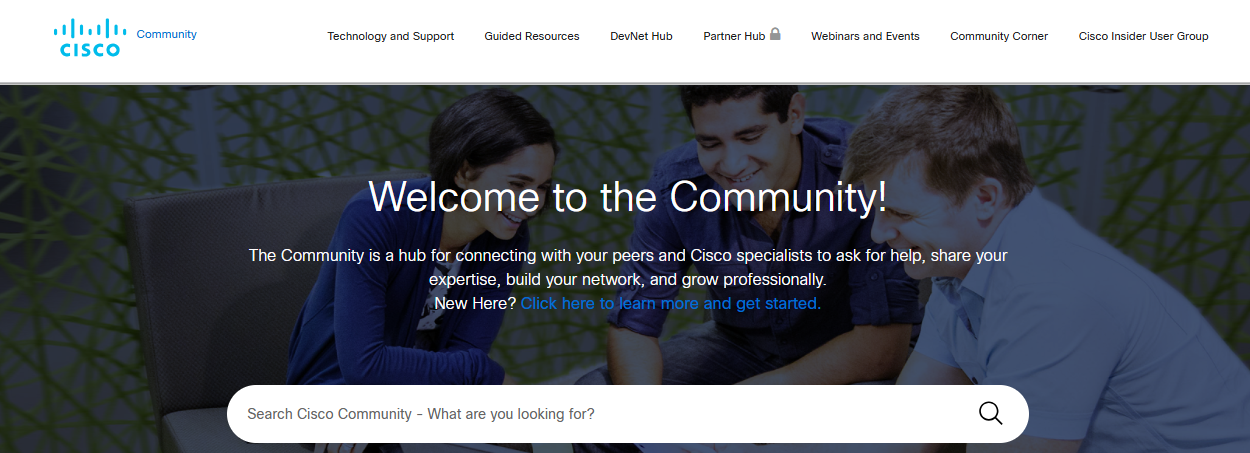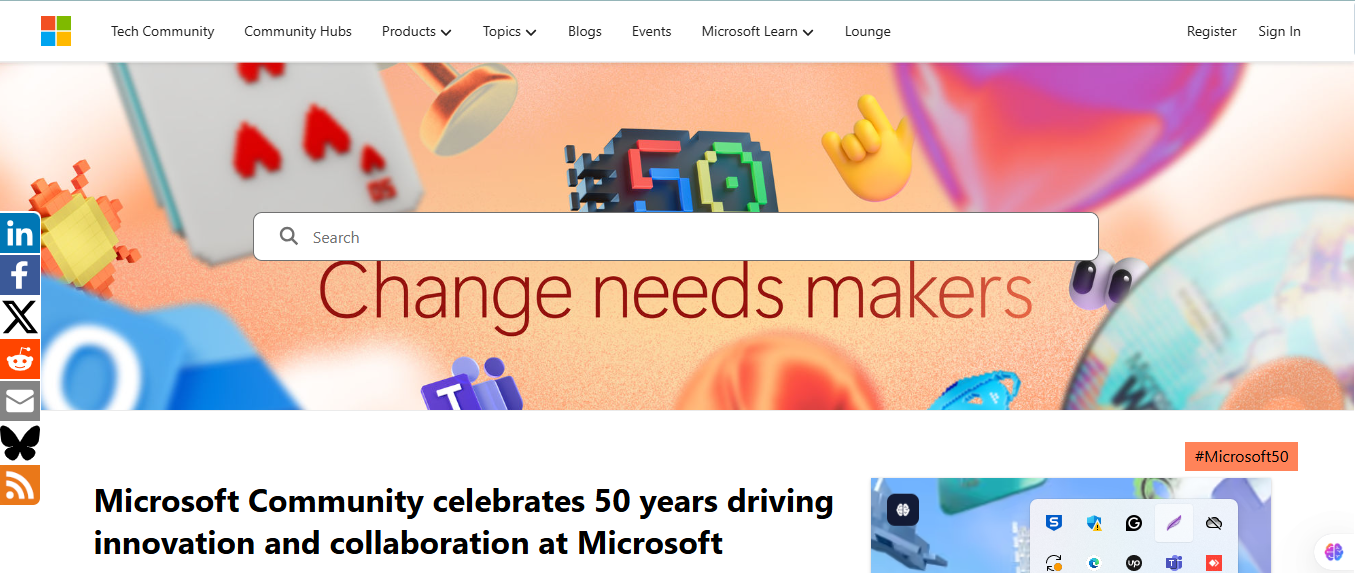Top Resources for Successful IT Managers in 2025
 GroWrk Team
GroWrk Team
Ever feel like you’re juggling a million tasks as an IT manager, such as security, compliance, and provisioning systems, all without a safety net?
You’re not alone. Most IT managers work in silos, dealing with increasingly complex environments and constantly shifting technology.
But here’s the thing that most successful IT managers know: collaboration and networking are key to staying ahead.
With tech evolving at lightning speed, keeping up with the latest trends and sharing experiences with peers is more crucial than ever. However, finding relevant and quality communities can be challenging. That’s where networking with the right groups comes into play.
In this post, we’ve put together a list of the best IT manager communities for 2025.
Key takeaways
-
Peer communities help IT managers solve real-world problems faster by offering vendor-neutral advice, regional insights, and role-specific support.
-
The best groups combine technical knowledge with leadership development, helping you sharpen both hard and soft skills through real-time engagement and shared experience.
-
Joining the right community can create a lasting impact, supporting smarter decisions, continuous learning, and stronger cross-functional collaboration.
Why does community matter for IT leaders today?
.png?width=600&height=300&name=it%20equipment%20disposal%20(4).png)
In 2025, IT managers are working in environments where technical training and soft skills go hand-in-hand. The industry is changing fast. Artificial intelligence, automation, and cloud services are reshaping how IT teams operate across the entire organization.
Here’s why communities are essential for modern IT leadership:
-
Vendor-neutral advice: Communities give IT professionals a space to evaluate tools and workflows without being bombarded by biased sales messaging. You hear what’s actually working from teams like yours.
-
Regional and industry-specific insight: From navigating GDPR in Europe to understanding U.S. compliance requirements, communities expose you to peers who share solutions tailored to your environment.
-
Career development and soft skills: Today’s IT manager isn’t just technical—they’re strategic. Peer groups offer guidance on leadership, stakeholder management, and effective communication that traditional training often misses.
-
Real-time problem solving: Communities often offer faster, more actionable feedback than support tickets or helpdesk articles. This means you can troubleshoot in hours, not days.
-
Support for emerging roles: As IT intersects with business operations, marketing, and HR, many professionals are building entirely new playbooks. Community helps you benchmark progress and exchange ideas on uncharted ground.
Community-powered learning & leadership: new frontiers for IT professionals
.png?width=600&height=300&name=MDM%20features%20(5).png)
Being an IT manager today is about more than keeping systems running. You’re expected to lead teams, adapt to new technologies, and bridge the gap between IT and the rest of the business.
That’s where the power of community shines. Increasingly, professionals are turning to peer groups not only for troubleshooting help but also for leadership advice, real-world use cases, and inspiration.
Let’s explore how communities are helping IT leaders level up in ways traditional training can’t.
-
Soft skills matter more than ever: Communication, adaptability, and cross-functional collaboration have become essential in IT leadership roles. Communities provide a space to practice these skills through mentorship, peer reviews, and feedback.
-
Beyond formal training: While certifications and courses provide foundational knowledge, communities offer case-based discussions, real-time Q&A, and exposure to practical tools, filling the gaps that structured education often leaves behind.
-
Machine learning implementation: From automating network monitoring to improving user behavior analytics, many communities now host focused ML threads where members share models, tools, and lessons from deployment.
-
IT + Marketing collaboration: As marketing tools, CRMs, and analytics systems increasingly require IT oversight, many IT leaders are turning to communities to understand how to support digital marketing teams effectively.
-
Hybrid work strategies: Communities offer firsthand strategies for managing distributed systems, securing endpoints, and keeping cross-location teams connected—whether you’re refining VPN setups or evaluating remote onboarding tools.
-
Just-in-time learning support: From curated FAQs to expert office hours, IT communities offer structured channels for fast, relevant help. This approach supports agile learning and reduces the need for lengthy courses or vendor tickets.
Top groups for IT managers in 2025
Joining the right IT community can provide you with real-time answers, leadership insights, and a robust peer network. Whether you're managing infrastructure, leading a hybrid team, or adopting new technologies, these communities offer support tailored to your role.
1. Spiceworks Community

-
Format: Forum-based platform
-
Focus: IT support, infrastructure, and management tips
-
Why Join: Spiceworks is one of the most active and well-established IT communities globally. It has vendor engagement and peer-driven discussions, making it a must-have resource for IT pros. Spiceworks is known for real-time, in-depth responses from fellow IT managers who share practical advice on everything from troubleshooting to optimizing IT environments.
-
Access: Free with account signup
2. Reddit r/sysadmin

-
Format: Reddit subreddit
-
Focus: Systems administration, distributed team challenges, and IT humor
-
Why Join: If you prefer candid, real-time feedback, the r/sysadmin subreddit is for you. This community has high engagement with moderators who keep discussions on track. The subreddit covers a wide range of topics related to systems administration, including hybrid work models, distributed teams, and even IT humor.
-
Access: Public; no login is needed to browse
3. Information Technology Managers Forum (LinkedIn)

-
Format: LinkedIn Group
-
Focus: Leadership methods, IT trends, and management strategies
-
Why Join: With over 11,000 members, the Information Technology Managers Forum is an active LinkedIn group where IT managers come together to discuss trends, leadership methods, and the future of IT. Topics often include mobile device management, cloud infrastructure, big data, and collaborative teamwork.
-
Access: Free with a LinkedIn account
4. Cisco Community

-
Format: Online forums
-
Focus: Cisco products and networking solutions
-
Why Join: The Cisco Community is a must-have for IT managers who work with Cisco products and services. Whether you’re dealing with networking issues or security concerns, Cisco experts are available to help.
-
Access: Free with account signup
5. Microsoft Tech Community

-
Format: Online forums and blogs
-
Focus: Microsoft products, including Azure, Office 365, and Windows
-
Why Join: The Microsoft Tech Community is perfect for IT managers looking to deepen their knowledge of Microsoft’s suite of products, including Azure, Office 365, and Windows. Engage with Microsoft engineers and peers to tackle complex issues, improve your cloud infrastructure, and understand digital technologies.
-
Access: Free with account signup
6. VMware Technology Network (VMTN)

-
Format: Online forums
-
Focus: Virtualization technologies and solutions
-
Why Join: VMware is at the forefront of virtualization and cloud technologies, and the VMware Technology Network (VMTN) is a great resource for IT managers who manage virtual environments. Whether you’re new to virtualization or a seasoned pro, VMTN has forums where you can discuss best practices, troubleshoot issues, and learn about new cloud infrastructure developments.
-
Access: Free with account signup
7. IT Leaders Forum
-
Format: Annual event
-
Focus: Leadership development and technological advancements in the public sector
-
Why Join: The IT Leaders Forum is a must-attend for IT managers in the public sector or looking to network with public service leaders. This annual event brings together CIOs and other senior IT decision-makers to discuss how technology is changing public services. Join this forum to get insight into leadership strategies, government IT policies, and the role of technology in public services.
-
Access: Registration required
8. The CTO Club

-
Format: Online community
-
Focus: IT management, DevOps tools, cybersecurity and cloud services
-
Why Join: The CTO Club is an exclusive, curated online community for senior IT professionals and CTOs. It focuses on IT management, DevOps tools, cybersecurity, and cloud services – all key areas for IT leaders managing large-scale technology infrastructures. The club curates a list of the best IT communities, tools, and best practices for managing complex IT systems and tackling cybersecurity challenges.
-
Access: Free with account signup
9. TechRepublic Forums

-
Format: Online forums
-
Focus: IT professionals discussing tech challenges
-
Why Join: TechRepublic’s forums are for IT professionals to come together and share knowledge on various IT challenges. Whether you’re troubleshooting technical issues, discussing risk management strategies, or seeking advice on systems management, this community is the place to learn from your peers.
-
Access: Free with account signup
10. Women Who Code

-
Format: Global community
-
Focus: Empowering women in tech through community and career development
-
Why Join: Women Who Code is a global network for women in technology, providing a platform for career development, mentorship, and networking opportunities. Being part of this community gives you access to a wealth of resources to help you grow in your role as an IT manager.
-
Access: Free with account signup
What to look for in an IT manager group?
Not all communities are created equal. The right group should align with your professional goals, give you real value, and support your growth without adding noise or distractions.
Here’s a quick breakdown of what to consider when evaluating IT communities:
| Criteria | Why it matters | What to look for |
|---|---|---|
| Relevance to your role | Different IT disciplines—Ops, Procurement, Security, etc.—require tailored conversations. | Choose communities that match your domain and provide actionable, role-specific insights. |
| Signal-to-noise ratio | Time is limited. You need high-quality discussions, not spam or off-topic chatter. | Look for curated groups with active moderation and focused, valuable content. |
| Real engagement vs. vendor spam | Vendor-heavy groups often push products, not solutions. | Seek peer-led discussions where professionals openly share experiences and best practices. |
| Live events or interaction | Learning is better when it’s live. Real-time discussions help build relationships and clarify ideas quickly. | Prioritize groups that host webinars, roundtables, AMAs, or in-person events. |
| Moderation quality | The tone and professionalism of the group depend on solid moderation. | Look for groups with clear rules, engaged admins, and constructive dialogue. |
| Access level and community size | Open groups are easier to join; gated ones often have deeper discussions. | Decide based on your goals: broader exposure or niche, in-depth engagement with vetted members. |
Emerging technologies
The pace of innovation in IT is accelerating—and with it, the expectations placed on IT managers. Staying competitive today means keeping an eye on technologies that are reshaping infrastructure, security, and workflows.
Here are a few key technology trends to track:
| Technology | Impact on IT management | Why it matters |
|---|---|---|
| AI & machine learning | Automates routine tasks, enhances analytics, and powers predictive systems. | Helps IT teams anticipate outages, detect anomalies, and improve service delivery. |
| Zero trust security | Enforces strict identity and access controls across users and devices. | Reduces risk in hybrid and remote environments by assuming no implicit trust. |
| Cloud-native infrastructure | Promotes flexibility, scalability, and faster deployment of services. | Supports rapid innovation while reducing reliance on physical data centers. |
| Edge computing | Brings data processing closer to users/devices to reduce latency. | Enables real-time applications (e.g., IoT, remote collaboration) across locations. |
| Blockchain & decentralized identity | Secures transactions and identity verification without centralized systems. | Boosts security and auditability, particularly in sensitive or regulated sectors. |
Why it matters now
These emerging technologies aren’t just future-facing—they’re already being adopted by leading organizations. As adoption grows, IT managers must:
-
Stay ahead of implementation trends to make informed investment decisions.
-
Understand how each technology integrates with legacy infrastructure.
-
Evaluate the security, cost, and operational impact before rolling out.
The best IT communities are often where these conversations happen first—real-world implementation tips, lessons learned, and vendor-neutral advice on getting it right.
How GroWrk supports IT managers beyond community
Peer groups give you perspective. GroWrk gives you execution. As you gather insights from top IT communities, you still need the right tools to put that knowledge into action—especially when managing global provisioning, compliance, and asset recovery.
Here’s how GroWrk helps IT managers turn strategy into results:
-
Centralized global provisioning
Ship pre-configured devices to remote employees in 150+ countries. GroWrk handles procurement, imaging, customs, and delivery—so your onboarding starts on time, every time. -
Automated offboarding workflows
Trigger secure device collection, remote lockout, and certified data destruction as soon as an employee exits. Reduce risk and reclaim assets without manual follow-ups. -
Real-time asset visibility
Track every laptop, monitor, or peripheral—where it is, who’s using it, and when it’s due for refresh. GroWrk gives you full control over your fleet without spreadsheets or guesswork. -
Built-in compliance tools
Meet GDPR, SOC 2, and other regulatory standards with audit-ready logs, secure device wiping, and full chain-of-custody documentation. -
Seamless integration with your stack
GroWrk connects with your HRIS, MDM, and identity platforms to automate device provisioning, access management, and support workflows across teams and time zones. -
A support model that scales
Whether you’re managing IT across 3 regions or 30, GroWrk acts as your logistics partner—freeing up your team to focus on strategic work, not chasing lost shipments.
Ready to scale your IT operations with less guesswork and more confidence?Book a demo and see how GroWrk helps IT managers lead smarter, leaner, and globally.






